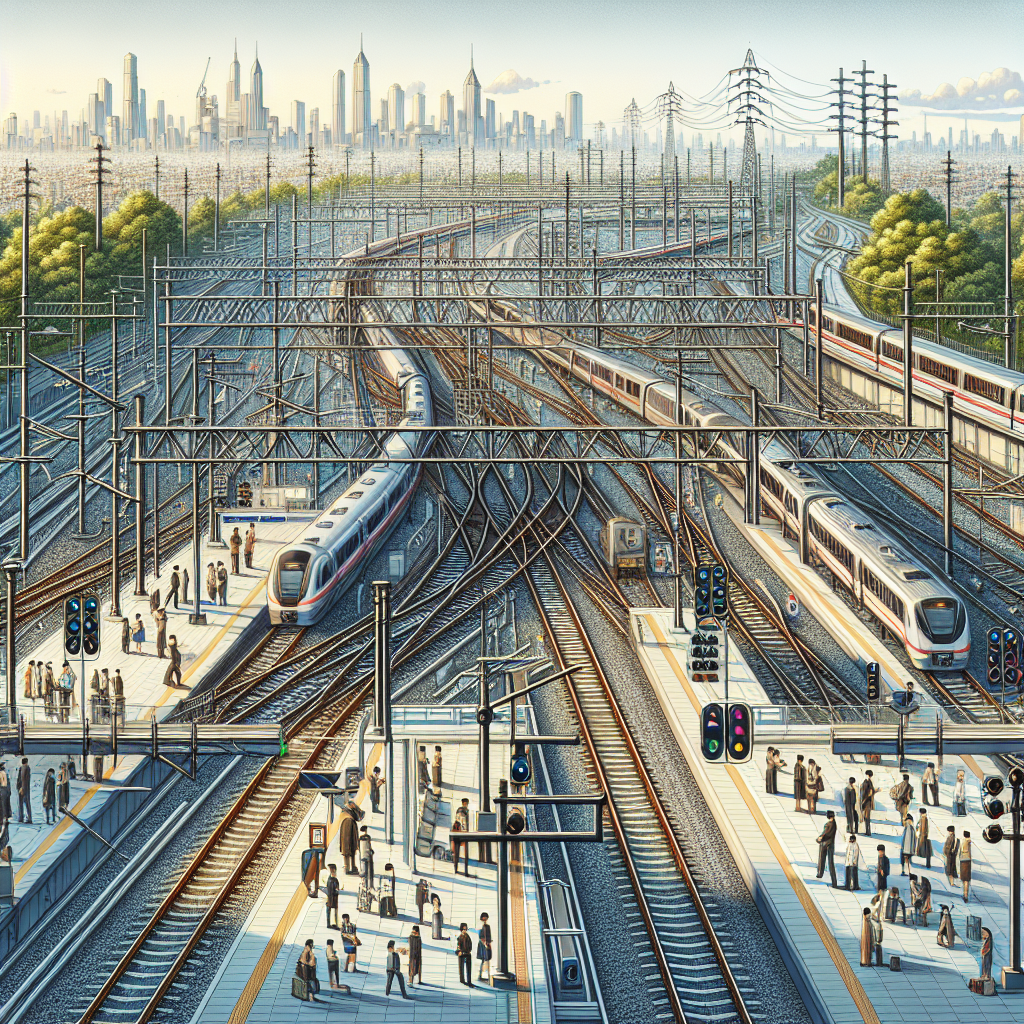Cabinet Clears ₹24,634 Crore Rail Projects to Boost Connectivity Across Four States
The approved projects are strategically located across major industrial and logistical corridors of western and central India, with the potential to reshape the regional transport landscape.

- Country:
- India
In a landmark move to modernize India’s railway infrastructure and improve multi-modal connectivity, the Cabinet Committee on Economic Affairs (CCEA) chaired by Prime Minister Shri Narendra Modi has approved four major multi-tracking projects of the Ministry of Railways with a total investment of ₹24,634 crore (approximately). These transformative projects will collectively add 894 kilometres of new railway lines across 18 districts in Maharashtra, Madhya Pradesh, Gujarat, and Chhattisgarh, significantly enhancing operational efficiency, passenger comfort, and freight movement.
Overview of the Approved Projects
The approved projects are strategically located across major industrial and logistical corridors of western and central India, with the potential to reshape the regional transport landscape. The four sanctioned projects include:
-
Wardha – Bhusawal 3rd & 4th Line (314 km) – Maharashtra
-
Gondia – Dongargarh 4th Line (84 km) – Maharashtra & Chhattisgarh
-
Vadodara – Ratlam 3rd & 4th Line (259 km) – Gujarat & Madhya Pradesh
-
Itarsi – Bhopal – Bina 4th Line (237 km) – Madhya Pradesh
These projects will expand the existing Indian Railways network capacity across key freight and passenger routes, forming vital links in the PM Gati Shakti National Master Plan, which integrates rail connectivity with roadways, ports, and industrial hubs to enhance logistics efficiency.
Strengthening Regional Connectivity and Development
The multi-tracking works will benefit approximately 3,633 villages with a combined population of over 85.84 lakh, spanning both urban and rural regions. The projects will also serve two Aspirational Districts — Vidisha (Madhya Pradesh) and Rajnandgaon (Chhattisgarh), furthering the government’s goal of inclusive development through infrastructure expansion.
The enhanced connectivity will not only reduce travel time and increase train frequency but also promote economic growth and employment generation in the project areas. According to the Ministry, these developments will make the local populations more Atmanirbhar (self-reliant) by spurring direct and indirect opportunities in construction, logistics, trade, and tourism.
“The projects reflect Prime Minister Modi’s vision of building a New India where connectivity and economic growth go hand in hand,” a senior government official stated.
Economic and Operational Impact
The four approved sections are part of crucial railway corridors that handle heavy freight traffic, including commodities such as coal, cement, fly ash, steel, food grains, and containers. The capacity augmentation will enable the Indian Railways to handle an additional 78 million tonnes per annum (MTPA) of freight traffic, helping to decongest overburdened routes and streamline goods movement.
The projects will ensure:
-
Improved punctuality and service reliability for passenger trains.
-
Reduced congestion, facilitating faster turnaround times for freight trains.
-
Enhanced logistical efficiency across industries and ports in western and central India.
This will further contribute to lowering logistics costs, which is a major enabler for the “Make in India” and “Viksit Bharat 2047” missions.
Environmental and Sustainability Benefits
Apart from economic advantages, the projects will also yield significant environmental benefits, underscoring the Railways’ role as an eco-friendly and energy-efficient mode of transport. The enhanced line capacity and modal shift from road to rail are projected to:
-
Reduce diesel consumption by 28 crore litres annually.
-
Lower CO₂ emissions by 139 crore kilograms each year — equivalent to planting 6 crore trees.
-
Contribute directly to India’s climate action goals under the Paris Agreement and Nationally Determined Contributions (NDCs).
The move reinforces India’s commitment to green transportation infrastructure, while aligning with the Net Zero Emissions 2070 target announced by the Prime Minister at COP26.
Connectivity to Key Cultural and Tourism Hubs
Beyond freight and passenger benefits, the railway corridors covered under the projects also traverse regions of cultural, ecological, and historical significance, boosting tourism potential. The routes provide enhanced access to notable destinations including:
-
Sanchi, home to the UNESCO World Heritage Buddhist stupas.
-
Satpura Tiger Reserve, known for its rich biodiversity.
-
Rock Shelters of Bhimbetka, an archaeological site with ancient cave paintings.
-
Hazara Falls and Nawegaon National Park, key eco-tourism sites.
By strengthening connectivity to such heritage and natural attractions, the projects will help promote domestic tourism and support local economies dependent on hospitality and related services.
Aligned with PM Gati Shakti and Vision of New India
The newly approved multi-tracking projects are an integral part of the PM Gati Shakti National Master Plan, a transformative initiative that integrates 16 ministries for coordinated planning and implementation of infrastructure. Through integrated data-driven logistics planning, the scheme ensures seamless connectivity between railways, highways, ports, and airports, eliminating redundancies and improving turnaround efficiency.
These projects align closely with the Prime Minister’s vision of a New India, focused on Atmanirbhar Bharat, sustainable mobility, and inclusive growth. By expanding rail capacity and reducing dependence on imported fuel, the initiatives also contribute to energy security and economic resilience.
Toward a More Connected and Prosperous India
With a combined investment exceeding ₹24,600 crore, the four multi-tracking projects represent another decisive step in India’s railway modernization journey. They are expected to create thousands of jobs during construction, while offering long-term economic and environmental dividends once operational.
The Ministry of Railways continues to play a pivotal role in achieving the government’s infrastructure goals, ensuring that India’s rail network evolves into a world-class, safe, sustainable, and high-capacity transportation system.
As these projects move toward implementation, millions across Maharashtra, Gujarat, Madhya Pradesh, and Chhattisgarh stand to benefit — not only through better connectivity but also through greater economic opportunity and environmental sustainability.
ALSO READ
Celebrating Two Decades of Development: Vikas Saptah Kickoff in Gujarat
Vibrant Gujarat Regional Conference: Catalyzing Economic Growth in North Gujarat
Coal Mine Blast Leaves Workers Injured in Chhattisgarh
Three workers, including 2 women, injured in explosion at coal mine of central PSU SECL in Chhattisgarh: Company official.
Digital Arrest Scam: Unveiling the Gujarat Connection










